HEATIT ET-24 Freeze Thermostatically Controlled Outlet
$14.99 Original price was: $14.99.$10.49Current price is: $10.49.
SKU: B09PV8TQL9 Categories: Building Supplies, Heaters & Heater Accessories, Hvac, Tools & Home Improvement Tag: HEATIT
- Free Shipping over $25
- Fast & reliable delivery options
- Enjoy top quality items for less
- Multiple safe payment methods

- Brand: HEATIT
- Included Components: NO
- Power Source: Corded Electric
- Voltage: 120 Volts
- Control Type: Button Control
- Energize below 38℉(3℃) and to turn off automatically at approximately 50℉(10℃). Automatically turns power on and off according to ambient temperature. Save energy and save money.
- Easy installation: just plug this device into electrical outlet. Maximum 15 amps. ETL approved. Only for dry location.
- Can be use for other applications: 120 VAC electric heaters, gas heater, Engine heaters, pipe heat tape, roof heating cable and so on.
- Make a test when you received the product. Put it into the freezer for 45 minutes can RESET it. And then plug in and you will see the red light on the thermostat control.
| Size | 1 Count (Pack of 1), ET-24 |
|---|
15 reviews for HEATIT ET-24 Freeze Thermostatically Controlled Outlet
Add a review Cancel reply
Related products
-30%
Rated 4.43 out of 5
-30%
Rated 4.33 out of 5
-30%
Rated 4.33 out of 5
-27%
Rated 4.43 out of 5
-30%
Rated 4.64 out of 5
-43%
Rated 4.50 out of 5
-30%
-54%
Rated 4.29 out of 5




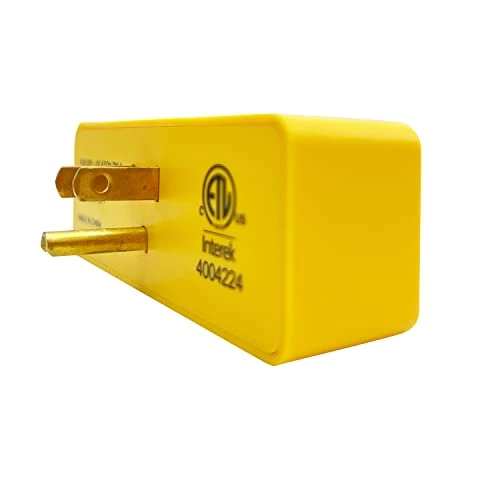
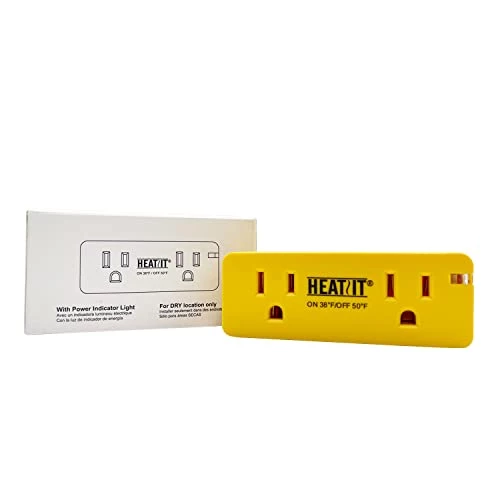
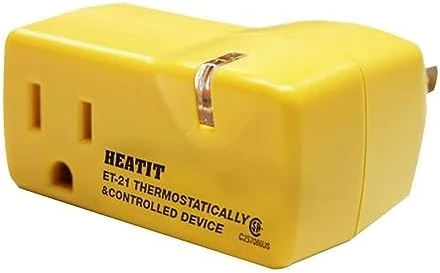
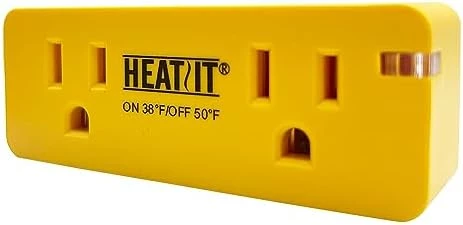
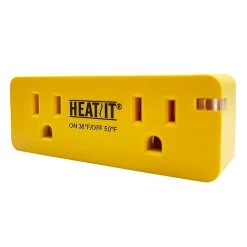
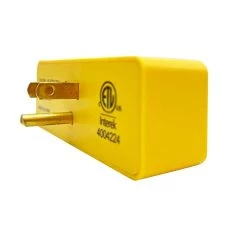
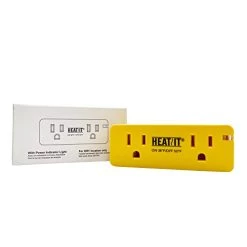
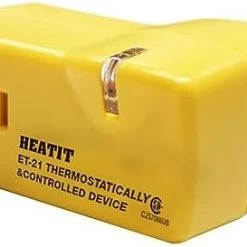


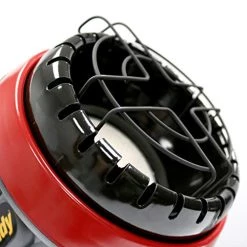

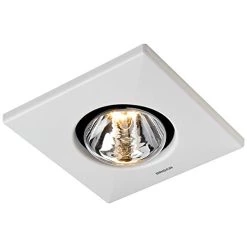
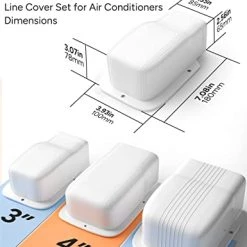

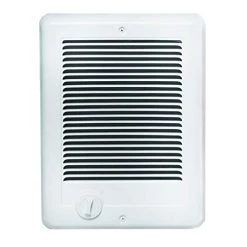
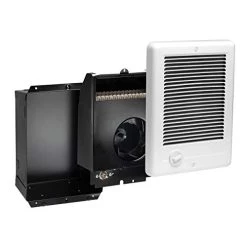
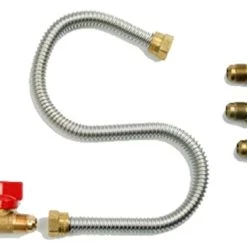
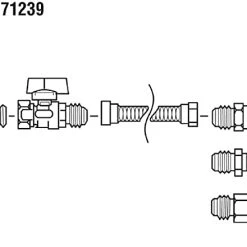



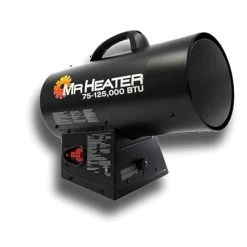
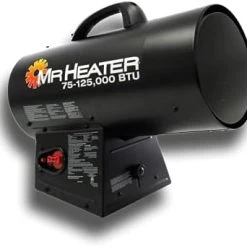
Round2it –
Our situation involves 3/4″ (OD) PEX piping (or tube if you prefer) that emerges from the ground about 8 ft from the edge of a 10 ft deep porch. The pipe is attached to the underside of floor joists and is completely exposed to ambient temperatures. It serves 2 hose bibs that are 50 ft apart along that porch. So, the overall length to protect is roughly 70 ft including branch legs. I started about 6 inches above the ground (to avoid possible exposure to water that might pass through) with the special end connector installed, all wrapped in shrink tubing for maybe 6 inches of “tape”. I did spiral around the pipe about 1 turn to 16 inches. I ran the tape from the tee up to the brass hose bibs (tape section near hose bibs was thoroughly wrapped to protect from rain/moisture) and managed to return running the HEATIT tape to the main supply for the 50 ft run to the hose bib and leg at the end. All was encased in 1/2″ thick x 1″ (ID) self-sealing foam insulation and re-hung under the joists. Termination with power supply adapter/cord into thermostatic outlet completed the install. The trickiest part was dealing with the spool, maintaining flat contact to pipe, especially when clearance between joist and ground was only about 14 inches.Finally, when temps dropped to low 20’s (F) I sampled at hose bib and measured 95F water temp and 65F on the brass hose bib external temp (w/IR gun). So, that tells me the 6 inch exposed PEX from ground to start should be nice and warm, too. VOILA – Problem solved!
Lewis A Edge Jr –
My irrigation well pump and pressure tank are in an unheated shed on our property. Fortunately, at our southern coastal location we do not experience bitter cold weather that is significantly below freezing.According to the professionals who drilled our well and installed our jet pump, an infrared heat lamp should be sufficient to protect our equipment. Since I do not wish to waste electricity burning the infrared lamp when it is not needed, nor do I wish to be bothered monitoring outside temperatures and remembering to manually turn the heat lamp ON and OFF, this device appears to be the ideal solution.Installation could not be simpler. There is nothing to adjust on this Freeze Thermostatically Controlled outlet. I simply plugged it into a 120 volt grounded outlet and then plugged the heat lamp into this device. Although I have not taken the time to determine this device’s accuracy nor have I owned it long enough to comment on its long-term durability, nothing protected by this device has frozen.
MadRanger –
As many have noted, the thermostat is horizontally oriented thus making it difficult to install in a covered outlet box. Rather than use a 2-prong extender and risk wet conditions as the HEATIT pokes out the side of the cover, I have opted to place the unit inside the well house (fake rock) at the end of the extension cord and then plugging in the heat lamp. Three comments about that: 1) the HEATIT stays dry, 2) it turns on at the proper temp, 3) it turns off at the proper temp, and interestingly, it cycles on/off frequently even if the actually outside air temp (OAT) remains below 35F. As configured, the heat lamp switches on at 35F, the well house/rock then heats up and eventually the lamp goes off when house/rock inside temp is ~40F. When the well house drops to 35F again, the lamp comes back on. So with my setup, the lamp is not on 100% of the time even when the OAT remains below 35F. Energy conservation!! The downside? When I look at the house/rock I’d like to see the lamp on when the OAT is below 35F. Now, I have to bank on the inside house/rock temperature actually being above 35F. However, condensation along the base of the rock that sits on a concrete pad is an indicator of warm air inside is forcing moisture out of the cold, outside air. With that explanation, I should not have to exit the house again tonight to prove to the wife that the well is protected for low temperatures. AND – when the manufacture sells a vertical unit, I might buy it. Might.
Ben G. –
Arrived on time seems to work should know in the next couple weeks when we get snow
Chuck Gilbert –
Works well, I’ve installed a few of these and no complaints
Mirwaise –
I received the product looks okay, but haven’t had a chance to use it. I did 8nstall it with a heater to keep well head warm during hard freeze
John L. –
This is working as described to control a heat lamp used to avoid frozen faucet and hose at the barn.Did the recommended test before installation and it worked.It has been coming on in the evening and going off each day as the temps fluctuate.Saving me money.
Pat Pending –
Works as advertised. I have an ice melt cable attached to it on my roof. Oh FYI, you have to let it reach the outside temperature prior to use.
Andrew Butler –
I’ve got a chicken coop with an outlet that I plug a heat lamp into for when it gets too cold at night. But on all but the coldest nights, it would get too hot, making the chickens uncomfortable and wasting electricity.I have a temperature sensor in the coop to monitor the situation, and after installing this, I can see that throughout the night the temperature oscillates between around 38 and 50. It would be awesome if the temperatures were controllable, but this is just what I needed, so I probably wouldn’t have changed it anyway.
Richard E. Fischer –
I use this in the pump house with a space heater. Reliably activates the heater as needed. Saves a lot of trips back and forth, and relieves worry if we’re away
Steve D. –
I use this in our Travel Trailer storage compartment where I have 3 LiFePo batteries installed. They have to be at or above 32 degrees when you charge them. I plug this temp controlled outlet into the 12 to 120 volt inverter to power a small space heater off of it. It turns the space heater on at ~ 38 degrees and off at ~ 50. Works like a charm. I bought 2 to have a hot spare but have not needed it yet after several years of use.
Alan Jackson –
I wish I knew that they made this a long time ago. It should come in very handy next winter. It is worth the money in my opinion.
KC –
Worked OK
Rusty Shackleford –
I use this to control power to heat trace tape on water lines for my whole home filtration system, and nothing has frozen and busted yet, so it must work.
Jason seals –
Plug it in, set it, and forget it…its that simple